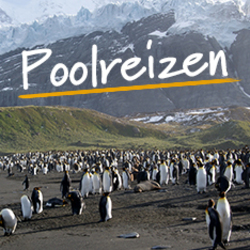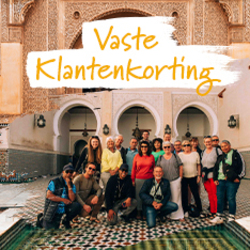Profiteer t/m 2 mei
BekijkFood
- See the unforgettable Taj. Explore the spectacular 'Pink City' of Jaipur. Meander along the Ganges at Varanasi
Activities
- Culture
- Cultural Wonders
- Festival Holidays
-
1
Start Delhi; transfer to Sariska National Park.
Those who are on the group flights will land in Delhi in the morning. Those not on the group flights will need to be at the start hotel by 9am (or at the airport when the group land). A local representative will meet Land Only clients at the start hotel and provide a transfer to the airport where we meet clients arriving on the group flight; once everyone has arrived we will then transfer to Sariska National Park.Alwar Bagh or similar
-
2
Morning game drive around Sariska National Park; drive to Jaipur in the afternoon.
This reserve was declared a sanctuary in 1955 and is home to nilgai, wild boar, jackals, hyenas and chowsingha (four-horned antelope). The game drive will be in the buffer zone of this national park mainly on sealed roads (there will not be an opportunity to see tiger during these summer months). Although these departures operate during the rainy season the crowds are reduced and those with an interest in bird life will find an abundance in Sariska. In the afternoon we drive to Jaipur and transfer to our hotel.Fort Chandragupt or similar
-
3
Visit City Palace, Jantar Mantar, Hawa Mahal and the Amber Fort; free time for exploring.
Built in the late 18th century, Jaipur is a planned city of broad avenues built of sandstone and painted pink at a later stage. We visit the City Palace in the centre of Jaipur, formerly the residence of the Maharaja, now a fine museum containing rare manuscripts, paintings, royal garments and weapons. Close to the palace is one of the most intriguing sights of India, the observatory of Jai Singh. This is an assembly of immense astronomical instruments made of marble and brass set in a pleasant garden. We will also see Jaipur's impressive landmark, the Hawa Mahal, or Palace of the Winds. We then see the impressive and splendid Amber Fort, a few miles from the main city, rising above a lake where elephants bathe. Jaipur is a centre of many handicrafts, such as durries (woven rugs), carpets, printed cloth, semi-precious stones, leatherwear etc. It will be difficult to leave a workshop without buying anything!Fort Chandragupt or similar
-
4
Drive to Agra via Fatehpur Sikri.
Today we drive to Agra via Fatehpur Sikri. Fatehpur Sikri is the Emperor Akbar's deserted royal city. This impressive and well-preserved citadel became his capital in 1571, after the blessing of a local Moslem holy man correctly predicted the birth of a longed-for son, his successor the Emperor Jehangir. The mosque, designed to hold ten thousand worshippers, the palaces, residences and halls of audience are all made of decorative red sandstone. But this magnificence only lasted 14 years, as in 1584 Akbar left Fatehpur Sikri to secure his outlying territories, leaving this city much as we see it today - in perfect condition. This is another very full but rewarding day. Pushp Villa or similar
-
5
Visit the incredible Taj Mahal and Agra Fort; overnight train to Varanasi.
Today we will rise early to visit the beautiful white marble Taj Mahal at sunrise; built by the Moghul Emperor Shah Jahan in memory of his beloved wife, Mumtaz Mahal, who died in 1631. The Taj is serenely beautiful and never fails to amaze a first time visitor; the white marble exterior changes colour according to the position of the sun during the day and is matched by the rich interior detail. Within striking distance is the imposing Red Fort of Akbar, third of the Moghul Emperors, whose mighty sandstone walls enclose the beautiful white marble Pearl Mosque and the palaces, halls, courtyards and fountains of his sons and successors, Jehangir and Shah Jahan. It is here that the latter spent his last years, imprisoned by his own son Aurangzeb. Later in the day we will transfer to Agra train station and join the overnight sleeper train to Varanasi.Sleeper Train
-
6
Relax and enjoy the wonders of Varanasi.
We arrive in Varanasi during the morning and transfer to our hotel. Varanasi, located on the river Ganges, is one of the most holy cities in India and stands at the centre of the Hindu Universe. As such, the city lives and breathes Hinduism: there are thousands of pilgrims, wandering holy men (Sadhus), religious elders and casual visitors. It is a city to get immersed in by exploring its maze of narrow lanes and the many temples, and watching the Hindu ceremonies that take place around the clock. There is time to explore the emporiums specialising in silks and brocades or maybe take a massage by the banks of the Ganges. Your leader can organise various optional sightseeing trips during your 2 days here.Hotel Surya or similar
-
7
Dawn boat ride on the Ganges visiting the bathing ghats; afternoon flight to Delhi
Just before dawn, we take a boat out on the Ganges to witness the extraordinary spectacle on the ghats, the steps leading down to the river. Every day thousands of Hindu pilgrims come to these three miles of riverbank to soak in the holy waters. This afternoon we fly back to Delhi.Florence Inn or similar
-
8
Full free day to explore Delhi independently or do optional tour
Today you are free to relax or explore the sites of New and Old Delhi (an optional sightseeing trip will be organised if you wish). Recommended sites are the Red Fort, Humayun's Tomb, India Gate, Jama Masjid (India's largest mosque), Sheeshganj Gurudwara (Sikh Temple) and Raj Ghat. For last minute shopping, we recommend the market area of Chandni Chowk or Karol Bagh.Standard Hotel
-
9
End Delhi.
Those on the flight inclusive package will depart for the airport this morning for the daytime flight back to London; Land Only arrangements will finish after check-out from the hotel.




































